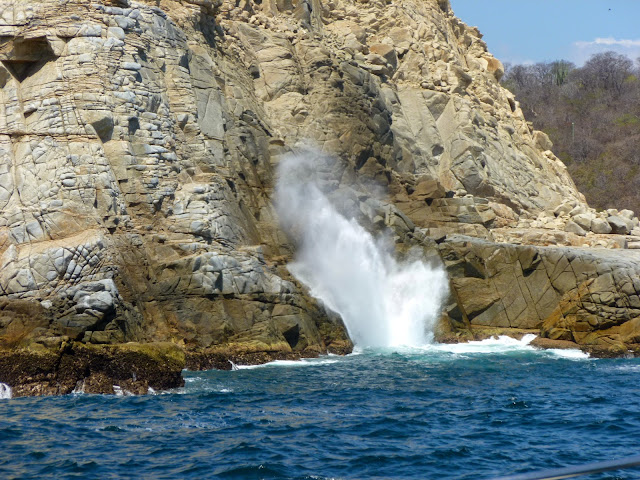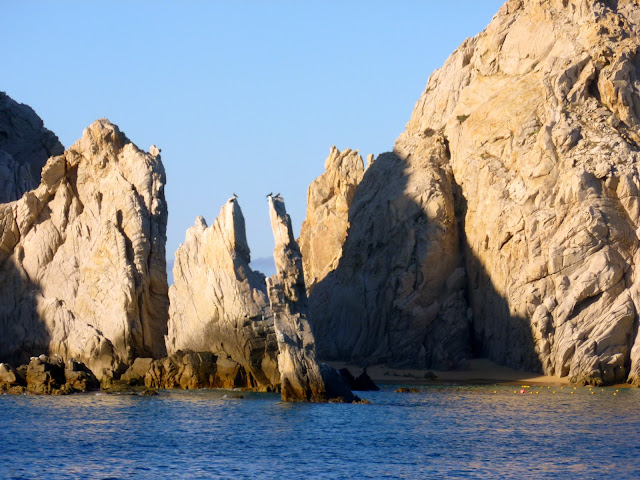Art at
Inglesia de Nuestra Señora de Guadalupe
La Crucecita, Oaxaca, Mexico
 |
| Inglesia de Nuestra Señora de Guadalupe |
N 15° 45.895 W 096° 08.346
Short Description:
A ceiling mural of the patron saint of Mexico, Our Lady of Guadalupe and a mosaic of Our Lady of Perpetual Help is located in Inglesia de Nuestra Señora de Guadalupe, commonly known as La Crucecita Church, in the center of La Crucecita, Oaxaca, Mexico.
Long Description:
 |
| Our Lady of Guadalupe |
This huge ceiling mural of Our Lady of Guadalupe extends from the street entrance of the church on the east to above the altar at the opposite, west, end of the church. The mural is the major attraction of La Crucecita and one of the most visited attractions of the Huatulco region of Mexico.
The mural was painted by Mexican artist Jose del Signo and is about 30 meters long (92') and 285 meters square (881 sq. ft.) in area. It is the largest painting of the Virgin Mary in Mexico. The mural was painted before the dedication of the church which occurred in 2000.
 |
| Mosaic |
 |
| Original Icon |
Our Lady of Perpetual Help is a title for the Blessed Virgin Mary as depicted in a well known 15th-century Byzantine icon at the church of Sant'Alfonso di Liguori in Rome, Italy. An exact mosaic copy of this famous icon is located in the Church of Our Lady of Guadalupe in the small town of La Crucecita, Mexico.
The image is set against a gold background and depicts the Blessed Virgin Mary wearing dark red dress with a blue mantle and cloaked veil. Mary looking forward while holding the hands of her son, Jesus. Characteristically the left sandal of Jesus is shown falling from his foot. The two angels in the background are Michael, on the left, and Gabriel, on the right. The mosaic is located in an alcove known as the Chapel of Our Lady of Perpetual Help (Capilla De Nuestra Señora del Perpetuo Socorro).



















































